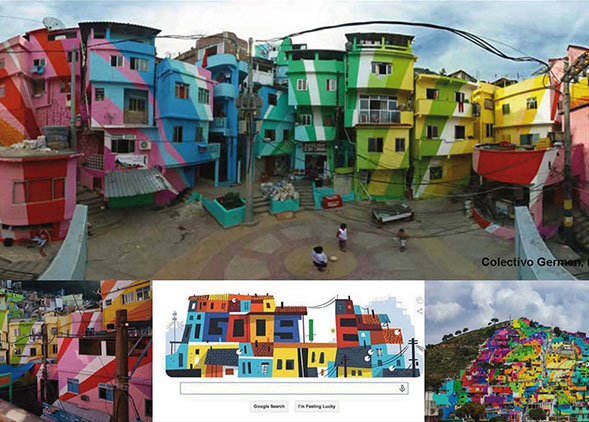Resili(g)ence. Smart Cities / Resilient Landscape
DOI:
https://doi.org/10.19229/2464-9309/622019Keywords:
city, environment, perspective, urban intelligence, resilienceAbstract
The holistic approach to the contemporary city recalls the use of new complex and integrated techno-environmental tools and qualitative urban development policies, in positive synergy. Advanced, proactive and reactive responses, which move in a hybrid field: on the one hand prevention and mitigation of conflicts and urban-territorial stress situations, through the interconnection of systematized data; on the other the programming of strategic interventions, articulated in intertwined systems. The term Resili(g)ence combines ‘intelligent values’ (information, knowledge, projection and adaptation) with ‘resilient values’ (resistance and recycling, recovery, renewal or adaptation) in a new responsive, sensory, and sensitive condition.
Downloads
Article Metrics Graph
References
Ascher, F. (1995), Métapolis ou l’Avenir des villes, Odile Jacob, Paris.
Gausa, M. (2017a), “Advanced Urbanism – Conceptual Keys”, in Ka-au | Knowledge alliance for advanced urbanism, vol. D3.3, pp. 18-21. [Online] Available at: www.ka-au.net/deliverables [Accessed 30 November 2018].
Gausa, M. (2017b), “MED.NET 3. Resili(g)ence – Goa Resili(g)ent City: Intelligent Cities / Resilient Landscapes”, in Gausa, M., Andriani, C. and Fagnoni, R. (eds), International Forum MED.NET 3 Resili(g)ence – Intelligent Cities / Resilient Landscapes ADD Scientific Meeting, Conference Proceeding, Papersdoc, Barcelona, pp. 11-36.
Gausa, M. (2015), “City Sense: Territorializing Information”, in Institute for Advanced Architecture of Catalonia – IAAC (ed.), City Sense – 4th Advanced Architecture Contest – Shaping our environment with real-time data, Actar Publisher, Barcelona, pp. 6-13.
Gausa, M. (2010a), “Hiper-Catalunya, Territori in rete”, in Gausa, M. (ed.), Multi-Barcellona Hiper-Catalogna – Sistole e diastole per una nuova geo urbanistica, ListLab, Trento, pp. 145-169.
Gausa, M. (2010b), “Recintos (y dispersiones)”, in Gausa, M. (ed.), Open – espacio, tiempo, información – arquitectura, vivienda y ciudad contemporánea, teoría e historia de un cambio, Actar Publishers, Barcelona, pp. 132-209.
Gausa, M. (2003), “Multiciudades, geourbanidades, hiperterritorios”, in Gausa, M., Guallart, V. and Muller, W. (eds), Hicat: Hiper-Catalunya – research territories, Actar Publishers, Barcelona pp. 10-13.
Gausa, M., Andriani, C. and Fagnoni, R. (eds) (2017), International Forum MED.NET 3 Resili(g)ence – Intelligent Cities / Resilient Landscapes ADD Scientific Meeting, Conference Proceeding, Papersdoc, Barcelona.
Gausa, M., Guallart, V., Müller, W., Soriano, F., Porras, F. and Morales, J. (2003), The Metapolis Dictionary of Advanced Architecture – City, technology, society in the information age, Actar Publisher, Barcelona.
Gausa, M. and Ricci, M. (eds) (2014), AUM 01 – Atlante Urbano Mediterraneo 01. MED.NET.IT.1.0 Ricerche urbane innovative nei territori della costa italiana, ListLab, Trento.
Guallart, V. (2012), La ciudad autosuficiente – Habitar en la sociedad de la información, RBA Libros, Barcelona.
Harvey, D. (1985), The Urbanization of Capital – Studies in the History and Theory of Capitalist Urbanization, Johns Hopkins University Press, Baltimore.
Larach, C. and Vera, F. (eds) (2017), Diálogos impostergables – XX Bienal de Arquitectura y Urbanismo de Chile, 2017 – Diálogos impostergables, identidad y futuro, Metales Pesados Ediciones, Santiago de Chile.
Mitchell, W. J. (1995), City of Bits – Space, Place, and the Infobahn, The MIT Press, Cambridge (MA).
Muñiz, I. and Galindo, A. (2005), “Urban Form and the Ecological Footprint of Commuting. The case of Barcelona”, in Ecological Economics, vol. 55, pp. 499-514.
Nel.lo, O. (2001), Ciutat de ciutats – Reflexions sobre el procés d'urbanització a Catalunya, Editorial Empúries, Barcellona.
Ricci, M. (2012), Nuovi Paradigmi, ListLab, Trento.
Rifkin, J. (2014), La nouvelle société du coût marginal zéro. L’internet des objets, l’émergence des communaux collaboratifs et l’éclipse du capitalisme, LLL Les Lines qui Libèrent, Paris.
Rueda, S. (2011), “Models d’ordenació del territori més sostenibles (o un nou urbanisme per abordar els reptes de la societat actual)”, in Cros, S. (ed.), Cap a un Habitat(ge) Sostenible, CADS, Barcelona, pp. 31-40.
Scröder, J., Carta, M., Ferretti, M. and Lino, B. (eds) (2018), Dynamics of periphery – Atlas for Emerging Creative Resilient Habitats, Jovis, Berlin.

Downloads
Published
How to Cite
Issue
Section
License
This Journal is published under Creative Commons Attribution Licence 4.0 (CC-BY).
License scheme | Legal code
This License allows anyone to:
Share: copy and redistribute the material in any medium or format.
Adapt: remix, transform, and build upon the material for any purpose, even commercially.
Under the following terms
Attribution: Users must give appropriate credit, provide a link to the license, and indicate if changes were made; users may do so in any reasonable manner, but not in any way that suggests the licensor endorses them or their use.
No additional restrictions: Users may not apply legal terms or technological measures that legally restrict others from doing anything the license permits.
Notices
Users do not have to comply with the license for elements of the material in the public domain or where your use is permitted by an applicable exception or limitation.
No warranties are given. The license may not give users all of the permissions necessary for their intended use. For example, other rights such as publicity, privacy, or moral rights may limit how you use the material.


















































































